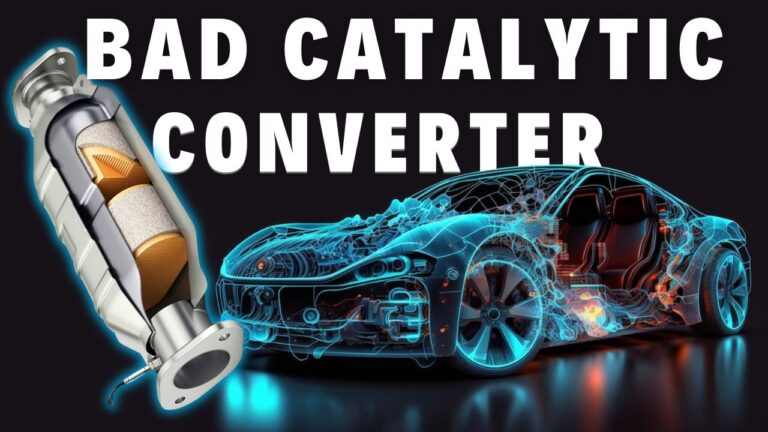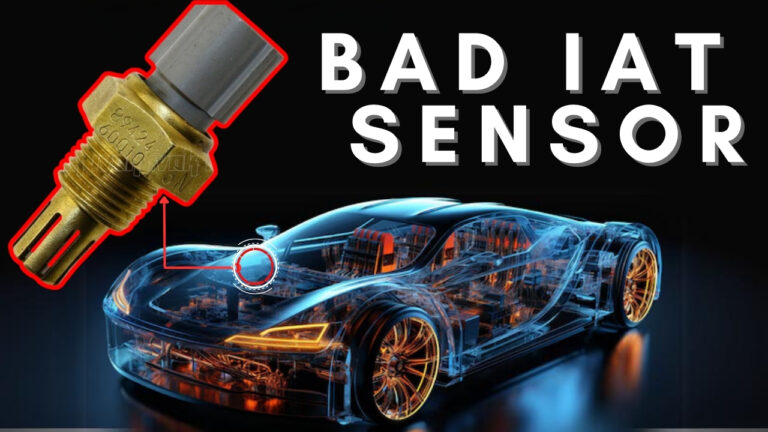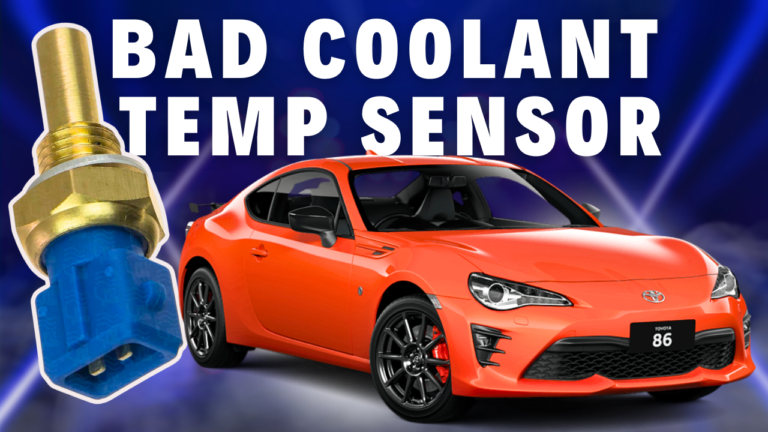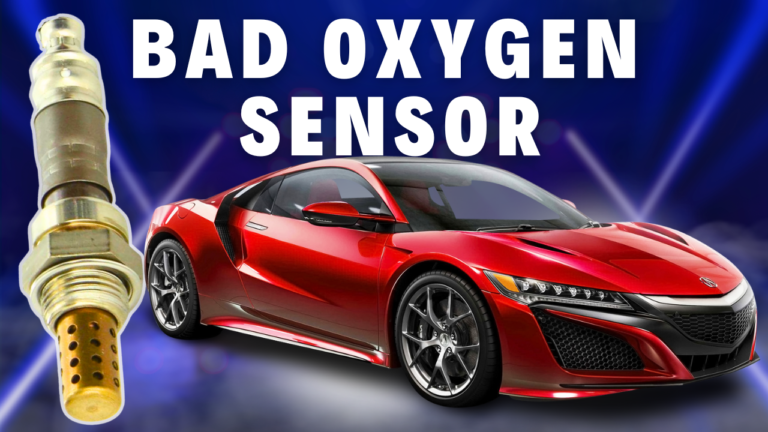The Honda Civic generally exhibits two main symptoms when it comes to starting problems:
Cranking or clicking but the engine does not start:
If your Civic is cranking or turning over but doesn’t start, there could be several reasons for this issue. To diagnose the problem, you need to check the engine air filter, fuel filter, fuel pump relay, and engine timing.
Not cranking and not starting at all:
If your Civic is not cranking or starting at all, the troubleshooting process is relatively simple. To diagnose the problem, you need to check the battery cable terminal, dead battery, starter, remote key feature and smart key battery.
However, one potential silver lining is that if your Civic is not starting at all, there may be fewer factors to consider compared to if it were cranking or clicking but not starting. In any case, diagnosing the root cause of your Civic’s starting problems is an essential first step in getting your vehicle back on the road as soon as possible.
Diagnosing the root cause of your Honda Civic’s starting problems
The diagnosis and steps for resolving the starting problems in the Honda Civic vary depending on whether the engine is cranking or not, and also on whether the model has keyless entry or a manual key.
However, if the Civic is not cranking or turning over and not starting at all, the troubleshooting process is generally easier.
Cranking or Turning Over But the Engine Does Not Start
1. Check Engine Indication
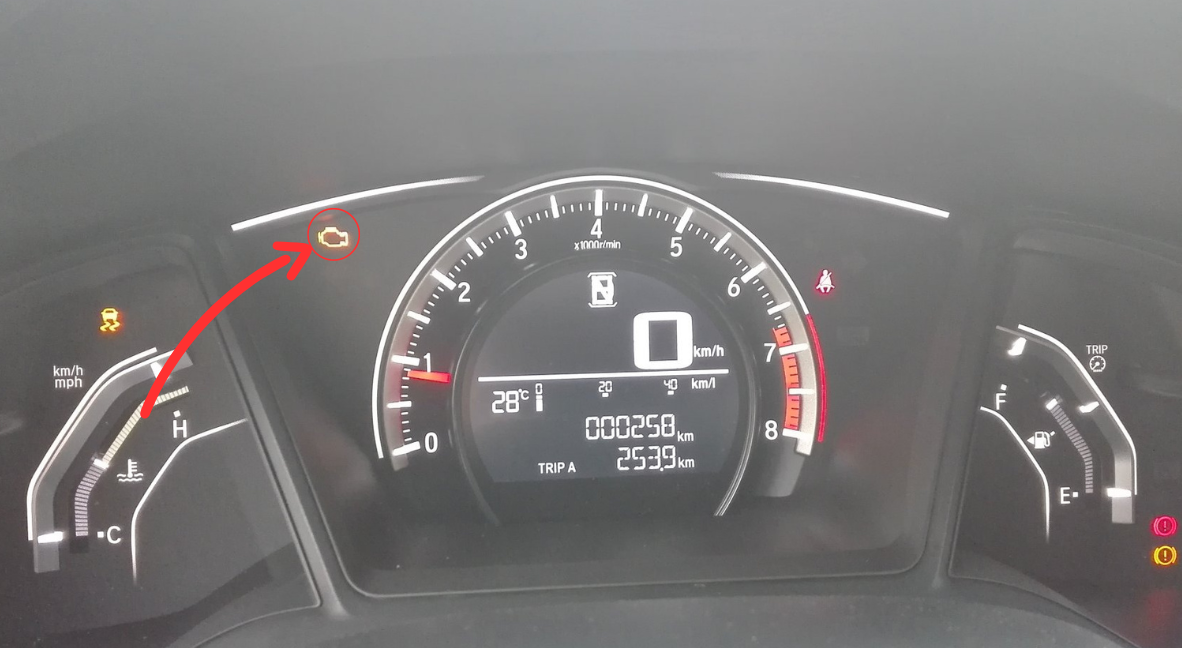
Diagnosis :
Turn the key to the ON position and check for the check engine light on the instrument cluster. If the check engine light does not illuminate, then the engine may not start due to a problem in the check engine circuit.
Troubleshooting :
To determine if the issue lies with the main relay, try replacing it with another healthy relay of the same type from the relay box.
The check engine problem in a Honda Civic may be due to various reasons, including issues in circuit related to the air-to-fuel ratio and fuel injectors.
If Honda Civic is cranking but not starting due to check engine circuit issue, you may need to check the fuse which protecting the air to fuel and fuel injector circuit.
If your Honda Civic is cranking but not starting and there is an issue with the check engine circuit, it is recommended to check the fuse that protects the air-to-fuel and fuel injector circuit. A blown or faulty fuse in this circuit can prevent the necessary electrical power from reaching the components involved in the air-to-fuel ratio and fuel injection process.
By inspecting the fuse related to these circuits, you can determine if it needs to be replaced or if there is an underlying issue causing it to blow. Checking and replacing the fuse, if necessary, is a good starting point for troubleshooting the cranking but not starting issue in your Honda Civic.
Check more about: Honda Civic Fuel Injector Fuse Location.
2. Security Engine Immobilizer
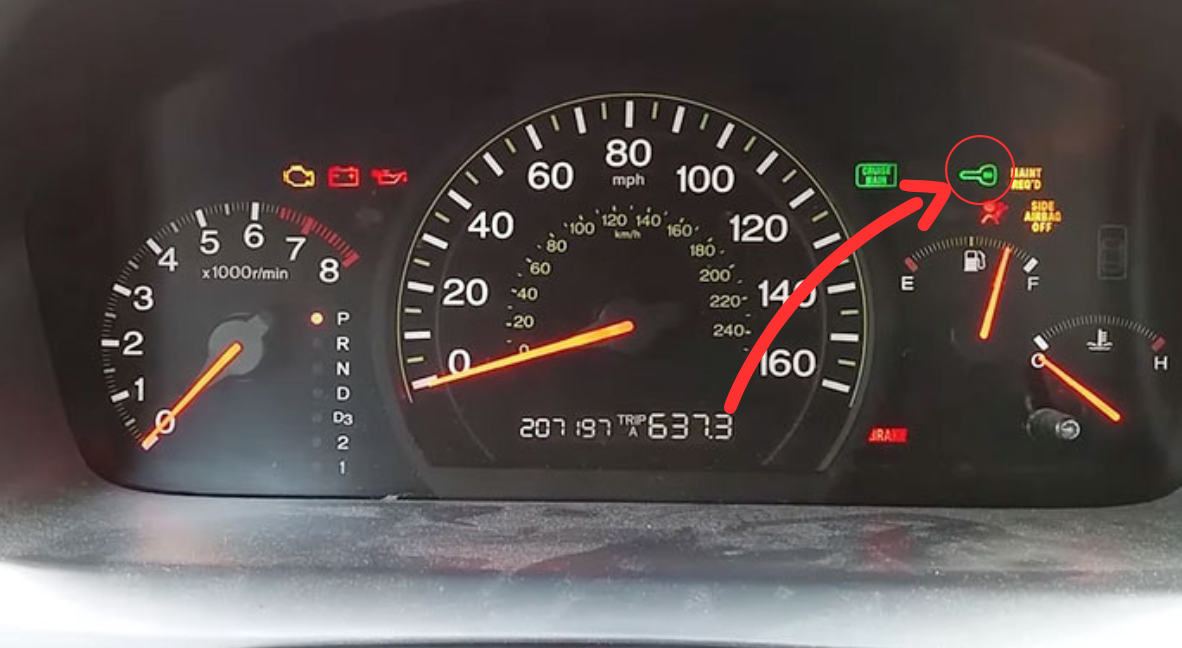
Diagnosis :
To check for a possible issue with the security immobilizer mechanism, turn the key to the ON position and look for the Engine Immobilizer Indication on the instrument cluster. The immobilizer indication should come on briefly and then go off. If the key symbol appears and stays on, the engine may crank but not start due to the security immobilizer mechanism.
Troubleshooting :
The immobilizer issue in your Civic could be caused by a faulty sensor in the key or a faulty lockset antenna. It may also be due to a blown fuse in the security system.
To diagnose the issue, first try starting your Civic with the second key. Often, the problem is caused by a faulty key sensor.
If the issue persists, check the fuse of the security circuit and see if it is blown. If it is blown, replace it.
If the issue still persists, it could be a problem with the lockset antenna or ECM. In this case, you should visit a service center for further assistance.
3. Fuel Supply
Diagnosis :
If Civic cranks or clicks but does not start, it could be due to a lack of fuel supply to the engine. To diagnose the problem, locate the fuel inlet line to the engine and open it. Then, crank the engine to check if fuel is coming out of the fuel line. If there is no fuel, there could be several reasons why fuel is not reaching the engine.
- Fuel Tank Level Low
- Fuel Pump Relay Malfunction
- Fuel Pump Fuse Blown
- Choke Inlet Fuel Filter
- Fuel Pump Malfunction.
Troubleshooting :
The troubleshooting of each problem is different and requires specific steps to identify and resolve.
Fuel Tank Level Low: If the car is cranking but not starting, it could be due to a low fuel level in the tank. Check the fuel level indicated in the instrument cluster. Sometimes, even if the instrument cluster shows a high fuel level, there may be low fuel in the tank due to a malfunction in the fuel level sensing system. To confirm the fuel level, check it manually in the tank.
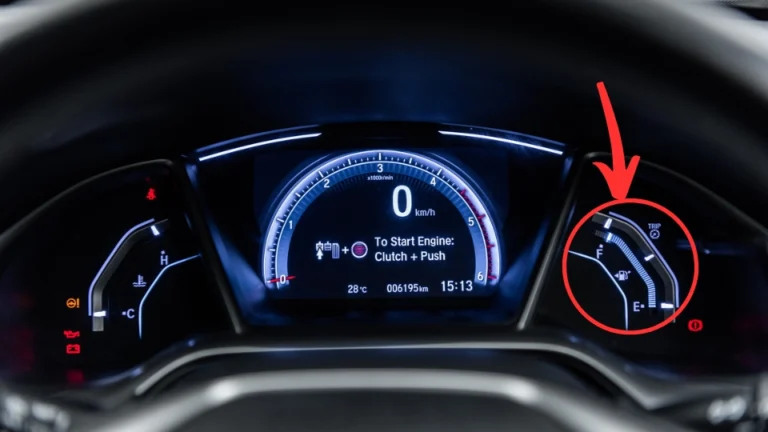
Fuel Pump Relay Malfunction : To diagnose a possible malfunction in the fuel pump relay, locate the fuel pump relay in the fuse and relay box. Replace it with a similar relay, such as the radiator fan or AC relay, and check if the engine starts. If the engine starts, then the problem is likely with the fuel pump relay and it should be replaced.
Fuel Pump Fuse Blown : It is possible that there is no power supply to the fuel pump due to a blown fuse. Locate the fuel pump fuse on the fuse diagram located at the back side of the fuse and relay box cover. If the fuse is found to be blown, replace it with a fuse of the same amperage rating.
Check more about: Honda Civic Fuel Pump Fuse Location.
Choke Inlet Fuel Pump Filter : The inlet fuel pump filter can become clogged due to low quality fuel, which can prevent fuel from reaching the engine. To check this, locate the fuel pump filter and inspect it for any signs of clogging or blockage. If it is dirty, clean it thoroughly or replace it with a new one.
Fuel Pump Malfunction : If all of the above checks have been performed and there are no issues found, then the problem may be with the fuel pump itself. We recommend taking the car to a workshop or service center to have the fuel pump checked and replaced if necessary.
4. Ignition System
Diagnosis:
The ignition system ignites the fuel in the cylinder and starts the engine. If there is no ignition due to several reasons, the Civic will crank or click but won’t start. There could be several reasons for no ignition, such as:
- Bad spark plug
- Blown ignition coil fuse
Troubleshooting :
Each problem requires different troubleshooting steps.
Bad Spark Plug : If the problem is caused by a bad spark plug, you can check the current at the spark plug end using a current tester while cranking the engine for each cylinder. If there is no current detected, it may be due to a bad spark plug. In this case, the spark plug should be replaced.
Blown Ignition Coil Fuse : If the ignition fuse is blown, there may be no supply to the ignition coil, and as a result, there will be no ignition at the spark plug. Check the ignition fuse from the fuse and relay box and replace it with a new one of the same amperage if it is blown.
5. Faulty Position Sensor
Diagnosis:
If the crankshaft position sensor or camshaft position sensor is faulty, it can cause misfiring and prevent the engine from starting. These sensors are responsible for sending signals to the Engine Control Module (ECM) to determine the timing of the spark in each cylinder. If either sensor is not functioning properly, the timing may be off and the engine may not start.
Troubleshooting :
To diagnose an engine that won’t start due to misfire, check for any loose or cut wiring of the camshaft sensor and crankshaft sensor. If any issues are found, fix them and try starting the engine again. If the problem persists, the sensors may be faulty and need to be replaced.
6. FUEL PUMP SHUT-OFF SWITCH
Diagnosis :
If the engine cranks but does not start after a collision, the fuel pump shut–off switch may have been activated. The shut–off switch is a device intended to stop the electric fuel pump when your vehicle has been involved in a substantial jolt.
Diagnosis :
- Turn the ignition switch to the OFF position.
- Check fuel system for leaks.
- If no fuel leak is apparent, reset the fuel pump shut-off switch by pushing in the button on the switch.
- Turn the ignition switch to the ON position. Pause for a few seconds and return the key to the OFF position.
- Make a further check for leaks in the fuel system.
- If everything found OK, press the reset button.
Not Cranking and Not Starting at All
If your Civic is not cranking or starting at all, the troubleshooting process is relatively simple.
The diagnosis and troubleshooting process may differ depending on the specific problem and the type of start system, whether it’s a push button start or a manual start.
1. Battery Cable Terminal
Diagnosis :

If there are carbon deposits on the battery terminal cables, it may prevent the electrical system from receiving power, causing the to not crank or start at all.
Troubleshooting :
To troubleshoot this issue, clean the car battery terminals and remove corrosion. Learn more about best way to clean car battery terminal and preventive measure for battery longevity.
Read more about: How To Clean Car Battery terminal Properly.
2. Dead Battery
Diagnosis :
If your Honda Civic suddenly refuses to start, the prime suspect is often the battery. Car batteries generally have a shelf life of 3-6 years, so if your battery is nearing the end of its shelf life, it may be the culprit.
If the battery voltage is low or dead, the Civic may not start.
Troubleshooting :
To start the car with a dead battery, you can push start it, but ensure someone is in the driver’s seat to control the car.
Automatic transmissions do not have push-start capability, you can jump start the car with another vehicle’s battery, using jumper cables.
If the battery has reached the end of its lifespan, it is advised to replace it to avoid further issues.
3. Faulty Alternator
Diagnosis :
If there is a fault in the alternator, it could lead to the Honda Civic not starting. The alternator is responsible for charging the battery, and if it fails to do so, the battery will not have enough power to start the vehicle.
There are several signs that your alternator may be malfunctioning :
- Dim or over bright lights
- Dead battery
- Red Battery warning light ON
- Electric power fluctuates; features like power windows failing or flickering interior lights
- Whining noises coming from the alternator.
Troubleshooting :
If you suspect that the alternator is not functioning properly in your Honda Civic, it is important to check the fuses and relays associated with the alternator before coming to the conclusion that it is faulty.
Check more about: Honda Civic Alternator Fuse Location.
4. Remote Start Problem
Diagnosis :
If your Civic has a remote start feature, it may not start due to a problem in the remote start circuit.
Troubleshooting :
If you are experiencing issues with remote starting, it is important to check the fuse and relay associated with the remote starter.
5. Starter Motor
Diagnosis :
If the battery is charged but the engine is not cranking, then there may be a problem with the starter.
However, a problem with the starter motor does not necessarily mean that the starter is faulty. It could be due to non-contact of carbon with the brush due to carbon wear off.
The problem may be due to starter motor malfunction of relay or fuse. Look for the starter motor relay and fuse and check its healthiness. If the starter motor relay or fuse is blown, replace it with a similar amp relay or fuse.
Check more about: Honda Civic Starter Relay Location.
Troubleshooting :
Simply replacing the carbon can solve the issue, and it is a cost-effective solution. Therefore, it is advised to check the carbon before replacing the entire starter, as it can help save you money.
6. Dead Smart Key Battery
Diagnosis :
If the battery in the Civic smart key is low, the car may not start using the push button start.
Troubleshooting :
If the smart key battery is low, you can try holding the smart key closer to the push button or touching the push button with the smart key to start the car.
Replace the key battery as soon as possible.

